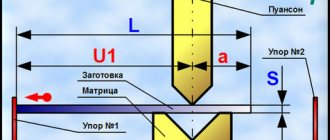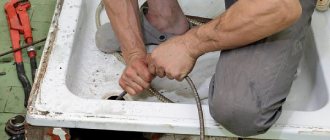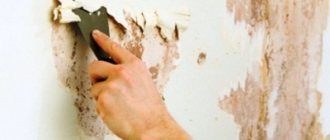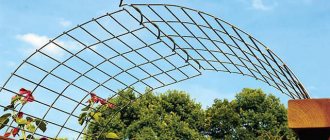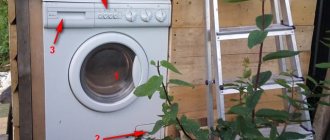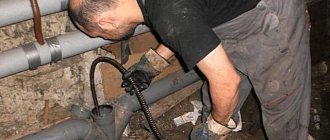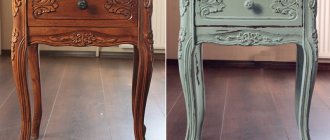The screwdriver has successfully replaced not only various types of screwdrivers, but also wrenches and hex keys. This tool is also used instead of a drill. For builders and furniture makers, an electric screwdriver has become an indispensable assistant. There are always uses for it at home. The range on the market is represented by a wide variety of models. Despite the prevalence of screwdrivers in various fields of activity, not all users, especially beginners, know how to operate them. Proper use, maintenance and storage of power tools will maximize their service life.
Design and purpose of power tools
Today, screwdrivers are produced by different companies. The most popular brands include Metabo, Bosch, Dewalt, Interskol. Such devices can be used in various fields of activity - at home, in construction, in furniture assembly. The device helps to drill, tighten or unscrew fasteners, and make carvings.
All devices include the following elements:
- frame;
- power button;
- cartridge;
- speed controller;
- rotation switch;
- tension regulator.
Note! Some models are additionally equipped with lighting and other details. Devices that operate on mains power have a cord, and cordless tools have charge stores.
When answering the question of how a screwdriver works, you need to familiarize yourself with its elements. Inside the device there is an electric motor, coupling, and gearbox. The tool also includes a capacitor and a circuit board.
How to work with attachments
Screwdrivers have different cartridges. Let's look at how to change the nozzle in all types.
- quick-release chuck. There are single-coupling and double-coupling types. Installed most often. To open the jaws and remove the old bit, rotate the front clutch counterclockwise. Insert a new bit and screw the coupling back on;
Spirit coupling chuck - hexagonal chuck with magnet. The nozzle is simply inserted and pulled out;
Replacing the bit in a hex chuck - snap clamp.
Found in pneumatic screwdrivers. The nozzle is inserted and snapped into place. To remove it, you need to pull the bit while holding the head of the clamp. You need to hold the head to remove the bit
How to use a screwdriver correctly
For the use of the device to be successful, it is important to strictly follow the instructions. How should you use a screwdriver?
Preparing for work
Novice craftsmen often don’t even know how to turn on a screwdriver correctly. To use the device at home, you need to do the following:
- Remove from the case and check for damage.
- After inspection, attach the battery and make sure there is enough charge.
- Install the desired nozzle. This is done taking into account the nature of the work - tightening screws or drilling.
- Use the controls to set the operating mode and rotation speed.
- If necessary, set the drilling depth.
At the stage of preparation for work, it is necessary to install the necessary attachments
Changing attachments
Many people are interested in how to properly screw a bit into a screwdriver. To do this, you need to understand the design features.
To fix the bit in the chuck, you should use a special attachment that has a magnetized holder. It prevents the structure from falling apart and holds the nozzle well in different positions. To attach the bat, you need to unscrew the movable fragment of the cartridge, place the bit there and completely screw the cartridge in.
Torque setting
To set the torque, the tool is equipped with an adjusting ring with printed values. They are installed depending on the hardness of the materials. So, for screwing self-tapping screws into drywall, 2-4 will be enough, and for durable wood, the maximum mark is more suitable.
Chuck rotation direction
The direction of rotation of the chuck can be changed to tighten or unscrew fasteners. This should only be done after the engine has completely stopped. Setting the switch to the middle position blocks the operation of the screwdriver.
Recommendations for proper instrument care
Both battery-powered and mains-powered models require periodic maintenance and ongoing care. Together with proper storage and the absence of operational overloads, these factors can extend the life of the screwdriver.
Quality care consists of the following:
- Do not let water get on the instrument. Therefore, the product should be stored in a specially designated, dry place.
- It is forbidden to throw the electric screwdriver.
- You should not overload the power tool: you can focus partly on heating the body. Only sharp drills should be used.
- The chuck must be lubricated periodically: the frequency of this activity is indicated in the operating instructions.
- If dirt, dust, adhering chips and other contaminants get in, they should be removed with a dry cloth (especially be careful with fuels and lubricants). You should also wipe down the device you are using at the end of the working day. The equipment must also always be in a clean condition.
- Batteries should be stored so that there is no short circuit between their terminals. The drives must not be deformed or left under direct sunlight.
- It is recommended to store lithium-ion batteries half charged from the maximum capacity, nickel-metal hydride batteries - fully charged, nickel-cadmium batteries - partially discharged (but only slightly).
- Nickel-cadmium drives after storage (or new ones) should be subjected to 3 full charge/discharge cycles before use so that they retain their capacity, and nickel-metal hydride – 4-5.
- Manufacturers recommend storing and operating electric screwdrivers at temperatures from -5 to +30 degrees.
- The charger for battery models must be turned off after charging the batteries to avoid overheating.
- Before and after work, it is recommended to check the integrity of the product being used, especially its moving parts.
- When drilling, it is recommended to periodically cool the bit using various methods.
Compliance with the given care recommendations does not take much time, but it helps to significantly extend the life of the product.
Before you start using a new screwdriver, it is recommended that you first read the operating instructions for it from the manufacturer. It already indicates the design features of the model, its technical characteristics, suitable area of application, frequency of maintenance, recommendations for transportation and storage. There are also safety rules that must be followed.
If, while working with the tool, there is a smell of melting plastic or insulation, smoke, uncharacteristic noise, or excessive vibration, then you should immediately stop using it.
When a product is under warranty, it is better to take it to a service center. Otherwise, you can try to repair it yourself.
Tool usage options
When answering the question of how to use a screwdriver for beginners, you need to take into account the tasks of using the tool.
Drilling metal and wood with a screwdriver
To make a hole in durable materials, you need to select the right drill and set the desired mode. This is done using the rotating part of the tool, which is located directly behind the chuck. Then the drill must be placed at the desired point and the start button pressed.
Note! It is important to keep the device strictly perpendicular. Otherwise, the drill may break.
Drilling on wooden surfaces must be done according to the rules
Drilling concrete and stone with a screwdriver
To answer the question of how to properly drill concrete with a screwdriver, you must first pay attention to the choice of drill. It should have a pobedite tip. Typically, drills with a diameter of 6 mm are used. Tools that are too thick will not work because the power of the screwdriver will be too low.
The tool must be held perpendicular to the axis. There is no need to press too hard on the drill. From time to time the pressure needs to be loosened.
Tightening screws, self-tapping screws and bolts with a screwdriver
This is the main purpose of a screwdriver. Each tool has a series of numbers that indicate the tightening torque. The thicker the fastener and the harder the material, the higher the value you need to set.
To screw self-tapping screws into roofing metal, a value of 12-14 is required. To screw ordinary self-tapping screws into wood, 8 is enough.
You also need to know how to insert a screwdriver into a screwdriver. When tightening the fastener, you need to press the bit quite hard so that it slips.
Features of drilling concrete, metal, brick with a screwdriver
Electric screwdrivers are used to drill wood, metal, concrete and other materials. At the same time, the functionality of the model used depends on its technical indicators: power, magnitude, torque, presence of shock operating mode, rotation speed. The operating instructions contain precise instructions on whether a particular material can be drilled with a screwdriver. It also provides the maximum diameter of the holes to be created, and in some cases, restrictions on depth.
Only a sufficiently powerful drill/driver can drill through a brick or concrete wall. In most cases, such devices can operate in shock mode. But drilling into a concrete wall with a screwdriver, even an impact type, is quite problematic. This tool is suitable for one-time operations only. This labor-intensive work is best done with a hammer drill.
In soft wood, even battery products from the household category are capable of creating holes with a cross-section of up to 20 mm. Using budget models from the rating of the best electric screwdrivers of 2017, various metals, including steel, are drilled. In this case, the diameter of the holes can reach 10 mm.
To drill each material, a specific type of drill is used. The nozzles differ not only in the material from which they are made, but also in their design and sharpening.
When working with a tool, the rotating drill must enter the surface of the material perpendicular to it - this allows you to evenly distribute the load on the equipment and create more accurate holes.
When drilling metal, it is recommended to first make a small depression in the center of the future hole using a core. This will prevent the drill bit from slipping on a smooth metal surface. If you need to make a hole with a sufficiently large diameter, you should first drill a smaller one. Also, when working with metal, it is recommended to regularly lubricate the nozzle with a special compound.
When using a drill-driver, you should keep in mind that you cannot apply strong pressure to it, because this will not only not speed up the work, but can also damage the drill, as well as the power tool itself. The effort must be constantly maintained at the same level. To avoid jamming or breaking the nozzle, you need to remove it from the drilled hole only when rotating. If the drill still gets stuck, you can get it out by reversing it.
It is recommended to drill small parts by first securing them in a vice. If you have to make a through hole in a thin sheet of metal or in a thin piece of wood, then you need to fit even pieces of plywood or boards under them.
Tips for using a screwdriver for women
Many people are interested in how women can work as a screwdriver. First of all, it is worth considering that using the device requires physical strength. Therefore, you need to hold it tightly and be very attentive.
Note! Women are advised to give preference to the lightest models possible. It is advisable to buy compact devices.
When working, you should follow these rules:
- charge the battery before starting work;
- correctly set the speed, mode, direction of movement;
- select nozzles.
Using a screwdriver has a number of features. To get a high-quality result, you must adhere to the basic recommendations of experts.
How to regulate speed and force
The rotation speed is changed by a switch located on the screwdriver body. High speed is used for large bolts and screws, as well as for drilling, if such a function is present.
Speed shifter
Many models have a force limiting clutch. Its presence in a power tool can be determined by a rotating ring with numbers. Some users do not understand the meaning of the clutch and do not touch it. Using a ratchet, you can adjust the depth of screwing in the screw. If the material is too soft, the head of the fastener is easily recessed and can pass right through. When using small fasteners, very high torque can destroy it. The ratchet prevents the slots of the screws from being cut off and the screwdriver bits from wearing out. To determine the desired value on the adjusting ring, make several passes, starting with the minimum. For drilling mode, maximum torque is used. But only if such a function is available.
Force limit clutch
The start button also regulates the rotation speed, but no more than that set by the switch. Let's say you set the switch to the first speed, which is stated to be up to 800 rpm. Pressing the trigger as hard as possible will not increase the speed. And the torque in maximum mode will be low, that is, you will not be able to tighten large screws and drill. And if you set the switch to maximum speed, you will be able to drill and the speed will be much higher.
Adjust speed, torque and reverse when the tool is off.
What is the difference between a hammer drill and an impact drill? Equipment
- For drilling in a hammer drill, drills with pobedite surfacing are most often used. The most vulnerable part of the tool is the ratchet. Therefore, when choosing a drill, you should take into account that under heavy loads and severe vibration they wear out very quickly;
- In addition to drills, rotary hammers also use drills, which are secured in chucks using a special system of clamps and specially shaped grooves
Having a certain degree of freedom in the movements of the drills in the chuck, the impact load in the hammer is significantly reduced.
The diameter of the chucks determines the possibility of using small or large drills.
Unlike an impact drill, the hammer drill contains a special adapter that allows you to change cartridges if necessary.
Another positive point when choosing a hammer drill is the impact of a lower level of vibration on the master’s hands due to the softening air cushion located in the pneumatic impact mechanism.
Performance
Determined by the impact energy value. For a rotary hammer it ranges from 1.5-20 J and is always an order of magnitude higher than for an impact drill. This largely depends on the mass of the device and the pressure force of the master. The technical characteristics of rotary hammers may also indicate the frequency of blows per minute: from 4 to 4.5 thousand blows in more powerful models and 2-3 thousand in less powerful ones.
Price
Taking into account the same power of tools, a hammer drill is always significantly more expensive compared to the price of an impact drill. However, we should not forget that a hammer drill belongs to the category of professional tools, so its cost is fully justified - drilling speed and durability.
How to choose a drill. Adviсe
- Before buying a drill, decide for what purpose you need the tool. The different purposes of drills imply the presence or absence of special functions, as well as a special cost.
- Unless necessary, do not purchase drills in a set with attachments - a plane, a grinder, a circular saw, etc. Excessive functionality indicates savings on quality.
- Ideally, a drill should be used only for drilling, and, for example, a screwdriver only for tightening fasteners. Therefore, opt for a tool with additional functions only when their use is 20-25% of the total amount of work.
Chuck types
The mechanism for fastening the drill is called a chuck.
According to functions and design they are distinguished:
- A quick-release chuck, where you don’t need to exert much effort to attach the drill—just a slight movement of your hand is enough to fix the drill. There are simple single-sleeve and double-sleeve cartridges with compression and release rings.
- A jaw (toothed) chuck in which the drill is secured with a key.
- The SDS collet chuck is an achievement of modern technology that allows you to automatically lock the spindle of the device after stopping the rotating mechanism. Therefore, to replace the drill, you just need to turn the chuck to the side.
What is the difference between an impact drill and a hammer drill?
The drill does not rotate. Different models have their own number of modes.
| RSS 2..
Previously, it was difficult to find good power tools for a workshop at home, and when sailors and representatives of other traveling professions brought drills, hammer drills, etc. from overseas business trips.
Nowadays it is much easier to find a suitable tool, so the questions come to the fore: what to choose and what criteria to follow?
After all, tools are often similar in functionality, such as a drill and a hammer drill.
In this article we will tell you about the distinctive features of these power tools and give useful tips on what to look for first when purchasing.
Hammer drill
An impact drill has the following features that are distinctive from a rotary hammer:
- more powerful;
- less weight;
- relatively inexpensive drills;
- a hole in the wall can be made without difficulty.
But why then do most people choose hammer drills?
Hammer
This is due to the fact that in an impact drill, impact work is not the main function, but an auxiliary one.
The emphasis here is on drilling. After all, the impact mechanism of an impact drill is a “ratchet”.
The hammer drills equally well and performs the impact function, so both of them are basic for the product.
The hammer drill has both electro-pneumatic and electromechanical impact principles, so its impact force exceeds that of a drill.
Another feature of the hammer drill is the safety clutch. It works if extra effort is required. The coupling will help out in difficult situations - when drilling a monolithic slab if the drill gets into a reinforcing bar.
When buying a rotary hammer, remember that they can be professional and household, i.e.
Impact drill instead of a hammer drill. Differences between a drill and a hammer drill
The main difference is the impact mechanism system
The most significant difference between a hammer drill and an impact drill is the operating principle of the impact system. So, in a drill, two gear mechanisms - ratchets - are used to generate a blow. The tool chuck is rigidly connected to the first of them, and its body is connected to the second. When the impact mechanism is not needed, a stopper is inserted between the ratchets and there is no contact between them. When the impact mode is turned on, the stopper is removed, and the gear train converts the rotary motion of the cartridge into a reciprocating motion.
This process is simply beautifully demonstrated in the following video
video, despite the fact that the announcer in the video constantly calls the impact drill a hammer drill, in fact the video shows the operation of a regular impact drill. It’s just that how do translators and announcers know the difference between a drill with an impact function and a hammer drill, they haven’t read our article :).
With a hammer drill everything is different. The impact device can be either electromechanical or electropneumatic. The first type is most often used. In this case, there are two coils that, through electromagnetic interaction, cause the core to move back and forth. Next, the energy is transferred directly to the working part of the hammer drill.
The pneumatic mechanism can be of two types. Equipped with a crank drive or a system with a so-called “drunk” rolling bearing. In the latter case, the rotating rotor drives the piston, which transmits the shock energy to the working part.
Well, the crank-type mechanism transmits its rotational energy using a piston, which pushes the working part of the hammer with compressed air.
Functionality is important
In this regard, the hammer drill is significantly ahead of the drill - after all, it has three operating modes. This is a spin kick, a spin kick, and just a kick. Accordingly, using an electric hammer drill you can not only drill a wall, but also break through it. Hollow out a large hole, make a groove for a cable, break off a piece of a wall - all this can be done with such a powerful tool as a hammer drill. But a drill with an impact mechanism has only two modes - standard drilling and drilling using impact. Moreover, the force of this blow is not as powerful as that of a hammer drill.
What are the differences between the main characteristics?
For electric drills, the main characteristic is torque, or torque. The unit for its measurement is Newton meter. Rotary hammers are classified according to a different criterion. For them, the main thing is power, which depends on the impact energy. This value is measured in joules. And the torque of a hammer drill should not be large at all; it is often much less than that of an impact drill with a motor of similar power.
Leader in Performance
And then the hammer drill breaks forward again. After all, its impact energy is undoubtedly greater than that of an impact drill. Therefore, working with a hammer drill is much more comfortable - you don’t have to press on it as hard as on an impact drill. When working with the latter, it will be extremely difficult to punch a hole without significant pressure.
Main Application
For a drill, the main area of application is work on drilling metal, tiles and wooden surfaces. Well, the hammer drill is designed to overcome concrete and brick walls. Therefore, both in terms of hours or minutes spent and in terms of quality, it is difficult to compare the result of work performed by one and another tool. After all, for a drill, the impact function is only an additional one. However, just like the drilling functions of a rotary hammer. Do not neglect the instructions, using the tool “to the fullest” where only short-term use is allowed. It will end sadly - a good thing will break.
Which screwdriver can handle drilling in steel pipes?
Task: drill holes in steel pipes (pillars for video surveillance) and drive self-tapping screws into them. productivity 10-15 holes with a diameter of 2-4 mm per hour. There is an outlet for recharging, but there is no way to drag the 220 to the poles.
Yes, almost everything. if the drills are sharpened correctly. And to be specific, announce the amount allocated for the instrument, otherwise lovers of DeFort, Bort, Packard Spence and other German-Swedish-Chinese brands will come running and trample on it. R. I apologize in advance if your famous company is not included in this list.
Shurik with two spare batteries, plus a conductor for the pipe, plus a supply of drills - and off he goes.
Based on my recent experience. Recently I drilled a dozen holes with a 8-pointer in 2 mm steel (initially 4, then drilled 8), one with a 4-pointer in 10 mm steel, drilled out 3 stuck screws, 2 holes with a 4-pointer in several mm steel, and cut threads into them. Several 4-piece self-tapping screws into the wood, I drilled them for them. a hole for an 8-mm cable in the wood, 20 mm, then a few more screws into the dense plaster, the force is on the verge of breaking the slot (if you tighten it by hand, you will sweat a lot with a very powerful screwdriver). I did some other little things, twisted screws, small screws, one hole in the plastic with a blunt drill. I don’t remember everything. oh, yes, before that there was a telephone socket on the wall with a self-tapping screw, another in the traffic jam (it didn’t work), a hole in the brick for it. All this on one charge, I charged it a long time ago, in mid-November (that is, self-discharge must be taken into account), there is still a charge, I don’t know how much. I think this should cover the work you want it to do in an hour, and that hour charges the other battery. So everything is real.
But, IMHO, the mandatory requirements should be:
- two-speed
- two batteries
- charging 1 hour
not lower than 12 volts, but preferably 14-18
I have a Bosh GSR 14.4-2, blue, two speeds, two batteries, charging in an hour. Battery 14.4 V x 1.5 Ah. I don’t know what the index -2 means, I assume it’s due to the battery, because... The model without it has 1:1 parameters, but the battery capacity is 1.2 Ah. I bought it at the house for 3900, it’s cheap, I just happened to come across some promotion. Without a promotion, this costs at least about 4 with a few hundred. Good luck!
Source: www.mastergrad.com
Can you drill into concrete with a drill?
It is no secret that the first step in any repair is procurement, when materials are purchased and tools are prepared. Depending on the nature of the work, completely different devices may be useful, but in most cases it is impossible to do without a drill or screwdriver. These tools are necessary for drilling or drilling cylindrical holes in various objects, into which dowels, screws and other parts will later be placed. Now manufacturers offer a lot of tools for such purposes, which differ not only in appearance, but also in the principle of operation.
